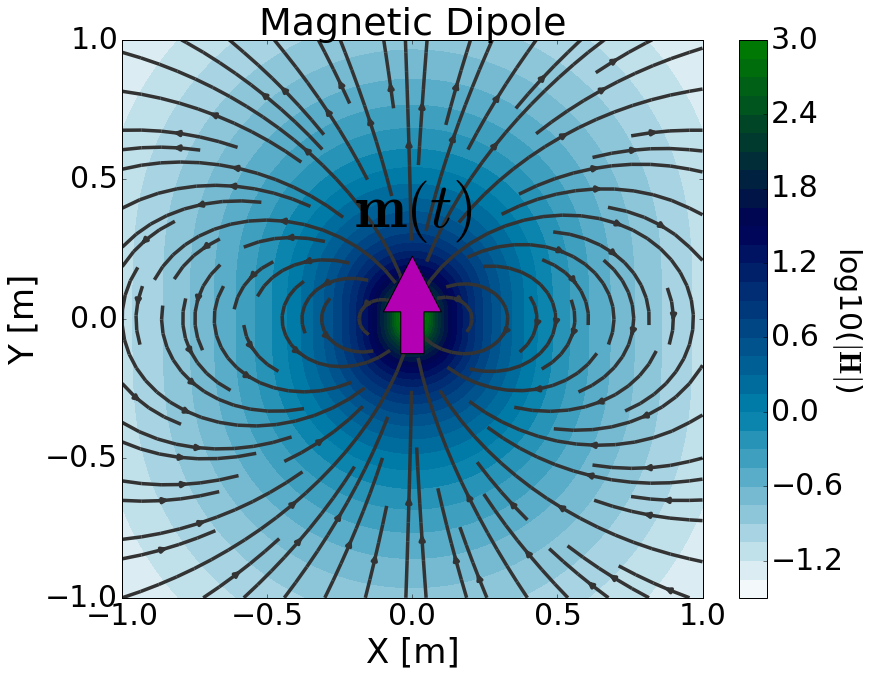Transient Magnetic Dipole
Purpose
Here, we provide a physical description of the time-dependent magetic dipole. This is used to develop a mathematical expression which can be used to replace the magnetic source term in Maxwell’s equations. We then consider a transient magnetic dipole; which represents a more commonly used geophysical source.
General Definition

Fig. 74 Physical representation of the time-dependent magnetic dipole source.
The time-dependent magnetic dipole can be thought of as an infinitesimally small loop which carries a time-dependent current. The strength of the source is therefore defined by a time-dependent dipole moment \(\mathbf{m}(t)\). For a time-dependent magnetic dipole defined by surface area vector \(\mathbf{S}\) and current \(I (t)\), the dipole moment is given by:
As a result, the source term for the time-depedent magnetic dipole is given by:
where \(\delta (x)\) is the Dirac delta function. Notice how the source term contains a time-derivative of the loop’s current. By including the source term, Maxwell’s equations in the time domain are given by:
where subscripts \(_m\) remind us that we are considering a magnetic source. The source is responsible for generating a primary magnetic field in the surrounding region (Fig. 74). According to Faraday’s law, time-varying magnetic fields generate rotational electric fields. In matter, this leads to an induced current density which produces secondary magnetic fields according to the Ampere-Maxwell equation.
Transient Electrical Current Dipole
The transient response represents the response of a system to step-off excitation. For a transient magnetic dipole with surface area vector \(\mathbf{S}\), the electromagnetic response results from a step-off current of the form \(I (t) = I u(-t)\). Thus the dipole moment is given by:
where \(u(t)\) is the unit step function and \(I\) is the amplitude of the current at \(t \leq 0\). The source term for the corresponding magnetic dipole is given by:
where \(\delta (x)\) is the Dirac delta function. By including the source term, Maxwell’s equations in the time domain are given by:
It is possible to solve this system to obtain analytic solutions for the transient electric and magnetic fields. However, we will apply a different approach which uses the inverse Laplace transform.
Organization
In the following section, we solve Maxwell’s equations for a transient magnetic dipole source and provide analytic expressions for the electric and magnetic fields within a homogeneous medium. Asymptotic expressions are then provided for several cases. Numerical modeling tools are made available for investigating the dependency of the electric and magnetic fields on various parameters.